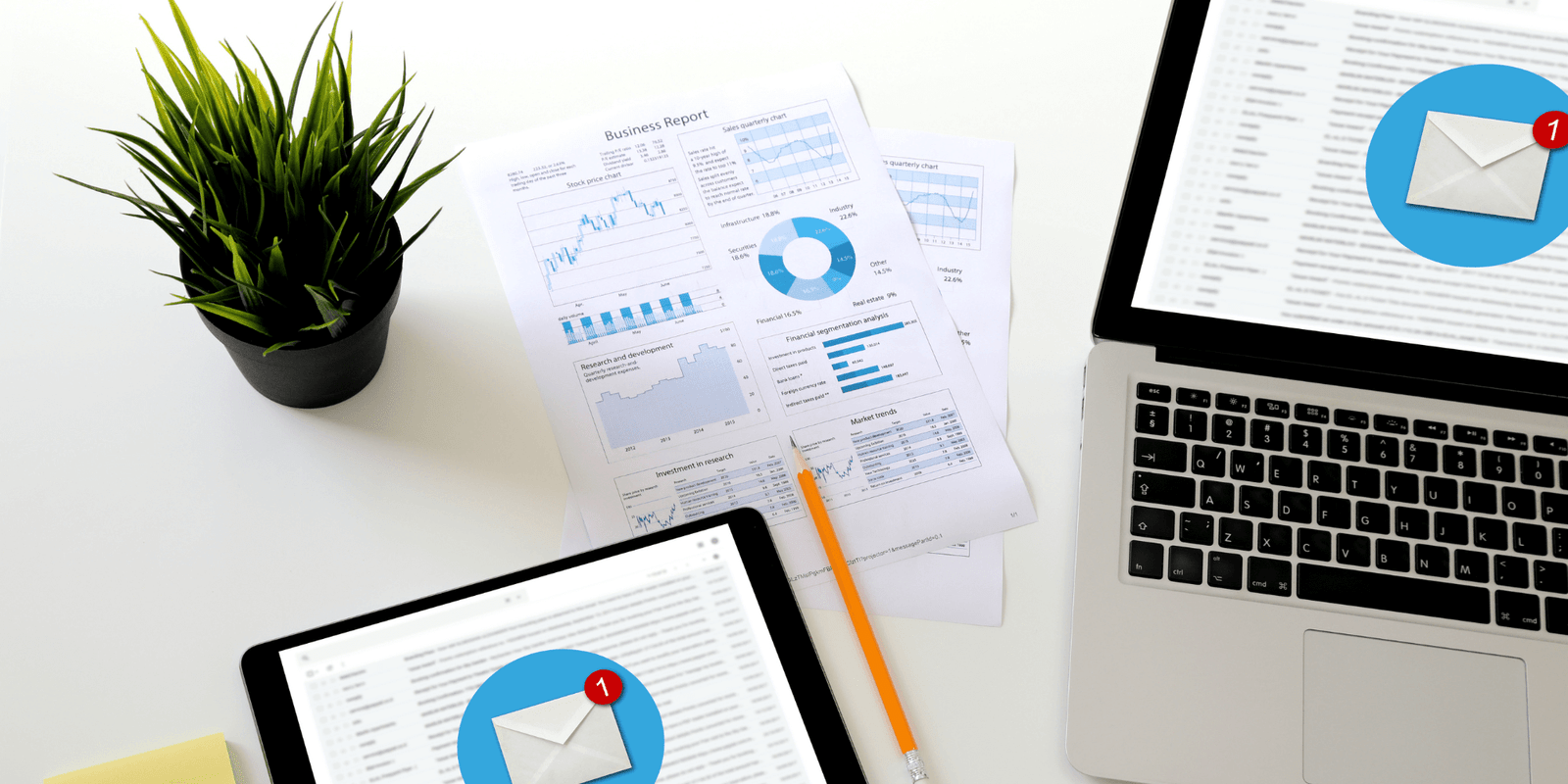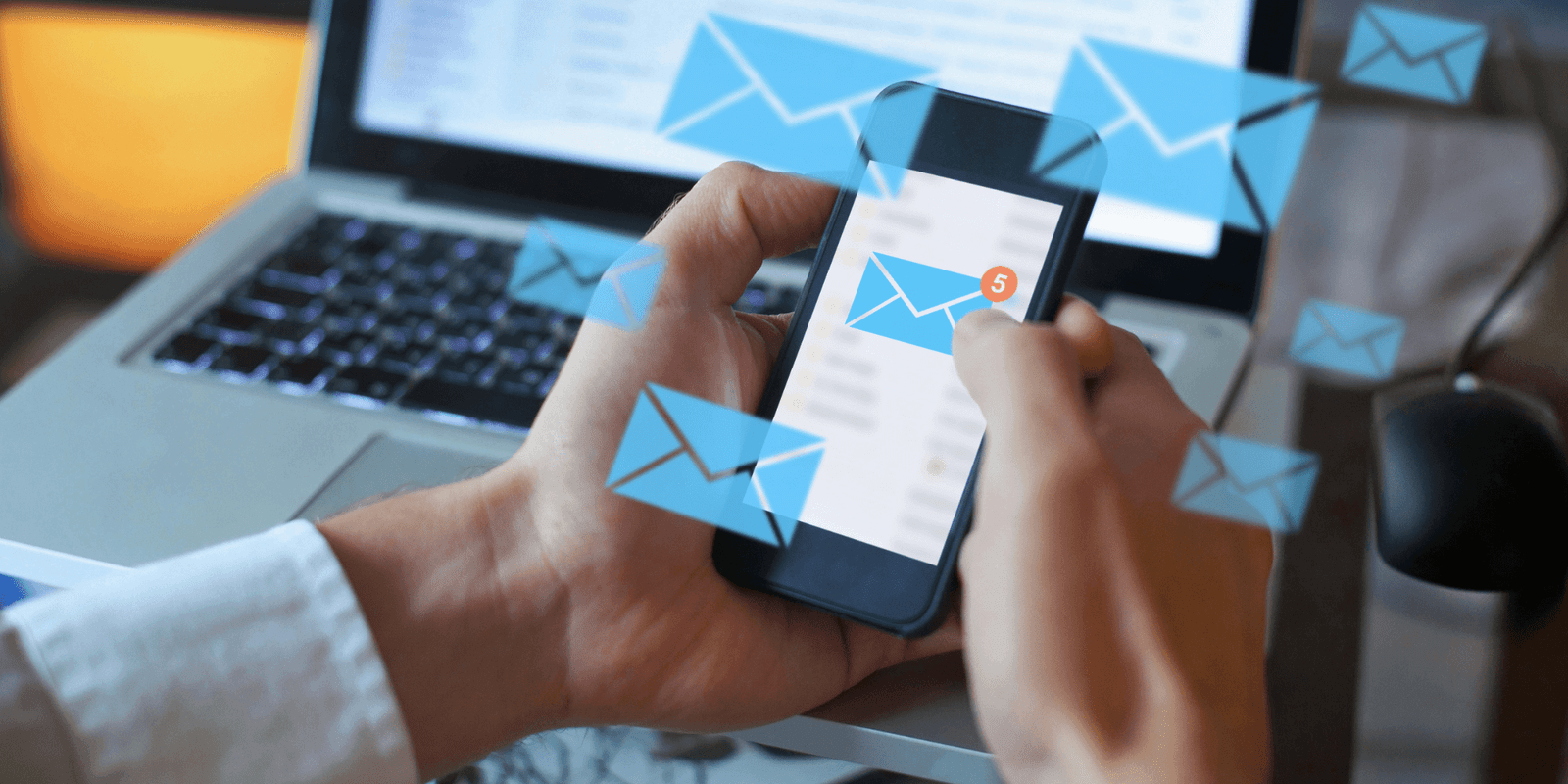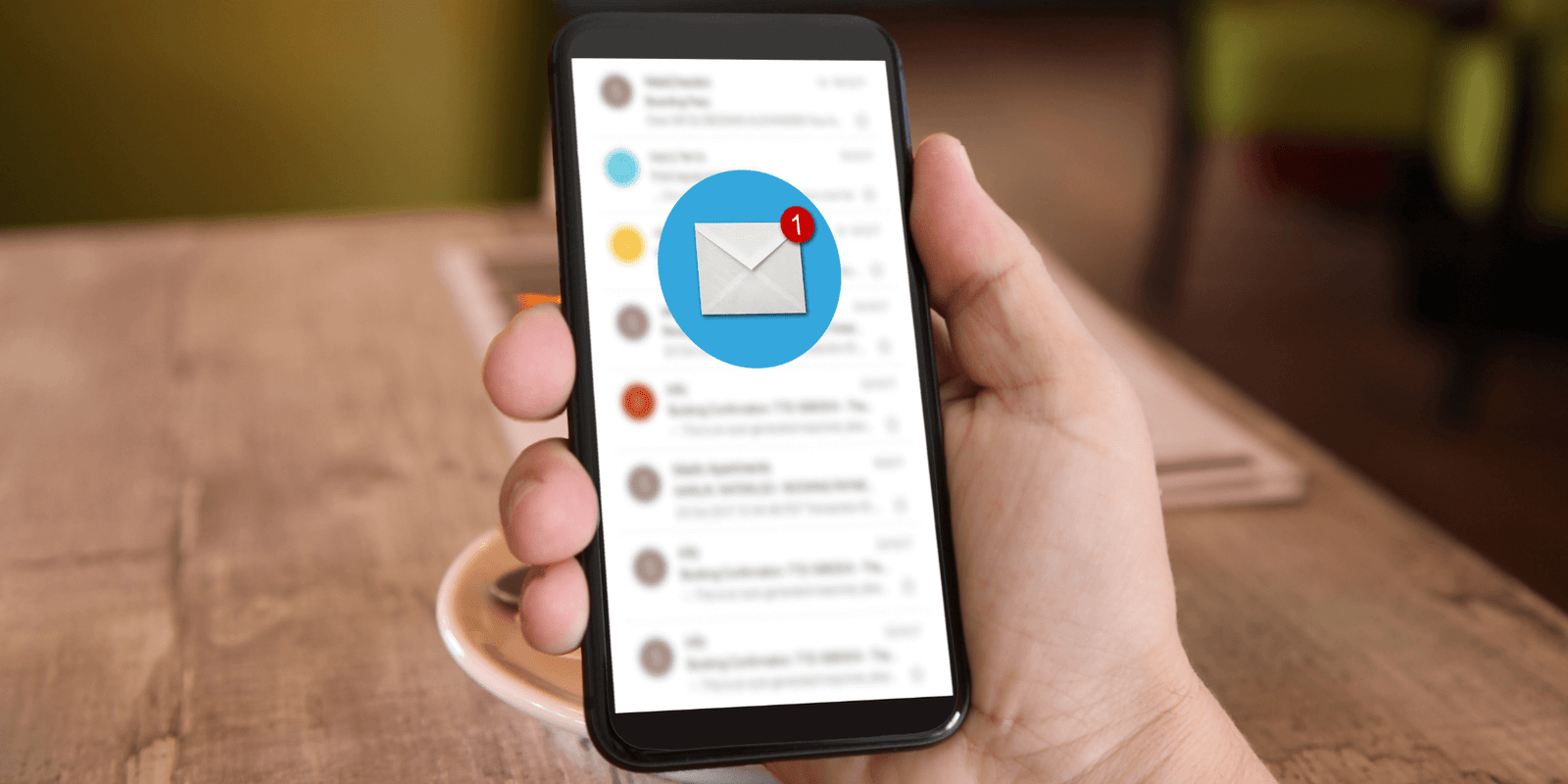Email Marketing Automation: A Beginner’s Guide

Did you know that businesses using email marketing automation achieve 53% higher conversion rates compared to those who don’t? With the power of email automation software, you can streamline your marketing efforts, engage your target audience, and drive exceptional results for your business.
In this beginner’s guide, I will walk you through the ins and outs of email marketing automation. From understanding the basics and choosing the right platform to developing an effective strategy and maximizing campaign performance, you’ll get all the information you need to harness the full potential of email automation.
Understanding Email Marketing Automation
In the digital age, email marketing automation has become an essential tool for businesses looking to streamline their marketing efforts and enhance customer engagement. In this section, we will delve into what email marketing automation is, explore the various aspects associated with it, and highlight the benefits it can bring to your marketing strategy.
Email marketing automation refers to the use of software and tools to automate various aspects of your email marketing campaigns. This includes automating the sending of emails, segmenting your audience, personalizing messages, and tracking user interactions. By leveraging automation software, you can save time and effort while delivering relevant and timely content to your subscribers.
One of the key components of email marketing automation is automation software, which provides the foundation for managing and executing automated campaigns. With a wide range of marketing automation software available in the market, you have the flexibility to choose a tool that meets your specific needs and goals.
Marketing automation tools not only enable you to automate the sending of emails but also offer features such as lead scoring, behavior tracking, and campaign analytics. These advanced capabilities allow you to gain insights into your audience’s preferences and behavior, enabling you to create more targeted and effective campaigns.
Benefits of Email Marketing Automation
When implemented effectively, email marketing automation can bring numerous benefits to your business. Here are some key advantages:
- Saves Time: By automating repetitive tasks, email marketing automation frees up time for you to focus on other important aspects of your business.
- Increases Efficiency: Automation tools enable you to create personalized and targeted campaigns at scale, maximizing the impact of your marketing efforts.
- Improves Customer Engagement: With automation, you can deliver relevant and timely content to your subscribers, increasing engagement and building stronger relationships.
- Drives Conversions: By segmenting your audience and delivering personalized messages, email marketing automation helps drive higher conversion rates and sales.
By understanding the basics of email marketing automation and its benefits, you are well-equipped to dive deeper into the world of automated email campaigns and explore the possibilities it offers for your business.
Choosing the Right Email Automation Software

When it comes to email marketing automation, choosing the right software is crucial for the success of your campaigns. With so many options available, it can be overwhelming to find the perfect tool that fits your needs.
In this section, I’ll guide you through the process of selecting the best email automation software for your business.
Factors to Consider
Before diving into the various email automation platforms and services, it’s important to consider some key factors that can help you make an informed decision. Here are a few things to keep in mind:
- Features and Functionality: Look for software that offers the specific email automation features you need, such as personalized messaging, drip campaigns, and advanced segmentation.
- Integration Capabilities: Ensure that the software can seamlessly integrate with your existing systems, such as your customer relationship management (CRM) platform.
- User-Friendliness: Opt for a user-friendly interface that allows you to easily navigate and manage your email automation campaigns.
- Scalability: Consider the scalability of the software, especially if you plan to expand your email marketing efforts in the future.
My Favorite Email Marketing Tool
As a reader supported site, we may earn a commission from purchases via links on this site at no cost to you.
With that said, when it comes to email marketing, I rely on ConvertKit. It’s the tool I use for list building and for sending automated emails to my list.
With that said, ConverKit is just one of the top email automation platforms and services in the market.
Take the time to research and compare the features and pricing of all the best email marketing platforms to find the one that best suits your business needs.
The Benefits of Choosing the Right Email Automation Software
By selecting the right email automation software, you can unlock a range of benefits that will propel your email marketing efforts to new heights.
Here are some advantages of choosing the best tool for your business:
- Improved Efficiency: With advanced automation features, you can save time and streamline your email marketing processes.
- Enhanced Personalization: The right software allows you to deliver highly targeted and personalized messages to engage your audience.
- Increased Conversion Rates: Effective email automation can lead to higher conversion rates and ultimately boost your sales.
- Better ROI: By automating repetitive tasks and optimizing your campaigns, you can achieve a better return on investment (ROI).
In the next section, we’ll explore how to develop an effective email marketing automation strategy to maximize the benefits of your chosen software.
Developing an Email Marketing Automation Strategy
In order to harness the full potential of email marketing automation, it is crucial to develop a well-planned strategy. By implementing automated email campaigns, drip campaigns, and personalized messaging, you can create engaging and targeted emails that resonate with your audience and drive results.
Create Automated Email Campaigns
One key aspect of an effective email marketing automation strategy is the creation of automated email campaigns. These campaigns are triggered by specific actions or events, such as a user signing up for your newsletter or making a purchase. By automating these emails, you can deliver timely and relevant content to your subscribers, increasing engagement and driving conversions.
Implement Drip Campaigns
Drip campaigns are a series of automated emails sent to subscribers at predetermined intervals. These campaigns allow you to nurture leads by gradually providing valuable information and building a relationship with your audience.
By strategizing the content and timing of your drip emails, you can guide your customers through the customer journey and increase the likelihood of conversion.
Craft Personalized Messaging
Personalization is a key component of successful email marketing automation. By tailoring your messages to individual subscribers based on their preferences, behaviors, and demographics, you can deliver more relevant and engaging content.
Personalized emails not only capture the attention of your audience but also make them feel valued, ultimately leading to higher open and click-through rates.
Design Automated Workflows
Creating automated workflows is another crucial step in developing your email marketing automation strategy. Workflows allow you to map out the customer journey and automate the delivery of emails based on specific triggers or conditions.
By designing workflows that align with your marketing objectives and customer needs, you can provide a seamless and personalized experience that guides your audience towards conversion.
A well-crafted email marketing automation strategy is essential for maximizing the effectiveness of your email campaigns. By incorporating automated email campaigns, drip campaigns, personalized messaging, and automated workflows into your strategy, you can engage your audience, nurture leads, and drive conversions.
In the next section, we’ll discuss techniques to maximize the performance of your email campaigns.
Maximizing Email Campaign Performance

When it comes to email marketing, getting the most out of your campaigns is crucial. With the right strategies and techniques, you can boost engagement, conversions, and overall campaign performance.
In this section, I’ll share valuable tips and explore advanced features that make email marketing automation a powerful tool.
Crafting Compelling Subject Lines
The subject line is the first impression your subscribers get of your email. It needs to catch their attention and entice them to open it. Create subject lines that are concise, intriguing, and personalized to your audience. Use actionable language and include a sense of urgency to drive immediate action.
Delivering Timely and Targeted Emails
In the world of email marketing, timing is everything. Here are three factors to consider when delivering your emails:
- Send your emails at the right time to ensure they are seen and opened.
- Use data analysis to understand when your audience is most active and engaged, and schedule your emails accordingly.
- Additionally, segment your email list and deliver targeted content that resonates with specific subsets of your audience.
This personalized approach should significantly improve your email campaign performance.
Utilizing Automated Email Sequences
Automated email sequences are a game-changer in email marketing automation. They allow you to deliver a series of highly relevant and timely messages to your subscribers.
It’s best to create sequences that follow the customer journey, nurturing them from initial contact to conversion. Craft each email in the sequence to provide value and encourage the next step in the customer’s interaction with your brand.
Exploring Advanced Features for Personalized Emails
Modern email marketing automation platforms offer a wealth of advanced features to enhance personalization in your emails. From dynamic content tags that insert subscriber-specific information to behavioral triggers that respond to specific actions, these features allow you to deliver highly personalized experiences.
Utilize these features to tailor your emails and make each subscriber feel valued and understood.
Powerful Tools for Marketing Success
Email marketing automation is a powerful tool that will revolutionize your marketing efforts. By leveraging advanced features, delivering personalized emails, and utilizing automated email sequences, you can maximize your email campaign performance.
Utilize the full potential of email marketing automation to engage your audience and drive results that matter.
Integrating Email Automation with a CRM
Integrating email automation with your customer relationship management (CRM) system can bring numerous benefits to your sales process and overall marketing strategy. By combining the power of email automation with CRM, you can streamline your operations, gain valuable customer insights, and empower your sales team to deliver personalized experiences that drive results.
Let’s take a look at the advantages of this integration:
1. Streamlining the Sales Process
Integrating email automation with CRM enables you to automate various stages of your sales process, from lead nurturing to follow-ups and customer onboarding. By automating repetitive tasks and workflows, your sales team can focus on building relationships and closing deals, saving time and increasing overall productivity.
2. Leveraging Customer Data and Analytics
CRM systems store a wealth of customer data, including contact information, purchase history, preferences, and interactions. By integrating email automation with CRM, you can harness this valuable data to create more targeted and effective email campaigns.
Analyzing customer analytics allows you to segment your audience, deliver personalized messages, and tailor your offers to meet their specific needs and interests.
3. Enhancing Communication with Existing Customers
Utilizing email automation in conjunction with CRM brings immense value when it comes to engaging and nurturing your existing customer base. By syncing customer data between your email automation platform and CRM, you can send targeted emails based on customer behavior, purchase history, or specific milestones.
This personalized approach strengthens customer relationships, encourages repeat purchases, and increases customer loyalty.
4. Coordinating Sales and Marketing Efforts
Integrating email automation with CRM creates a seamless connection between your sales and marketing teams. By aligning your email campaigns with CRM data, you can ensure that both teams have access to real-time customer information, enabling them to coordinate efforts effectively.
This collaboration streamlines communication, improves lead management, and ultimately drives better results across the board.
5. Retaining and Upselling Existing Customers
Integrating email automation with CRM can also help you optimize customer retention and increase upselling opportunities. By leveraging customer data and behavioral triggers, you can proactively engage with customers who are at risk of churning and provide them with personalized offers or solutions.
Furthermore, email automation enables you to notify your sales team when existing customers exhibit purchasing signals, allowing them to make timely and targeted upsell offers.
By integrating email automation with your CRM system, you can effectively streamline your sales process, leverage valuable customer data, and empower your sales team to engage existing customers strategically.
The combination of these tools opens up new possibilities for driving revenue, increasing customer satisfaction, and growing your business.
Nurturing and Engaging Existing Customers
In today’s competitive business landscape, retaining existing customers is just as important as acquiring new ones. With the power of email marketing automation, you can nurture and engage your existing customer base, driving loyalty, repeat purchases, and overall customer satisfaction.
Let’s explore some strategies for creating automated email marketing campaigns that will help make an impact.
1. Personalized Messages
In order to maintain a strong connection with your existing customers, it’s crucial to deliver personalized messages that resonate with their needs and preferences. By leveraging automation tools, you can segment your customer list based on previous purchases, demographics, or any other relevant data, and send targeted emails tailored to each segment’s interests.
This personalized approach will demonstrate that you understand your customers on an individual level and are committed to providing value specifically to them.
2. Automated Email Marketing Campaigns
To consistently engage your existing customers, it’s essential to have an automated email marketing campaign in place. This campaign should have a well-defined series of emails that are triggered based on specific customer actions or milestones, such as a recent purchase, a specific time since their last purchase, or their birthday.
By automating these campaigns, you can stay top of mind with your customers, ensure timely follow-ups, and provide them with relevant information or offers that encourage repeat purchases.
3. Targeted Emails for Customer Segments
Not all customers are the same, and their preferences and needs can vary greatly. To effectively engage your existing customers, consider segmenting them into different groups based on their purchase history, demographics, or engagement level.
By doing so, you can create targeted email campaigns that speak directly to each segment’s unique interests and concerns.
Whether it’s offering exclusive promotions, providing product recommendations, or sharing relevant content, targeted emails will demonstrate that you understand your customers’ specific needs and are committed to meeting them.
4. Measure and Optimize
As with any marketing strategy, it’s essential to measure the effectiveness of your email marketing automation efforts and continuously optimize your campaigns. Utilize automation tools to track key metrics such as open rates, click-through rates, conversion rates, and customer feedback.
These insights will provide valuable information on what’s working and what needs improvement, allowing you to refine your approach and deliver more impactful messages to your existing customers.
Remember, nurturing and engaging your existing customers is an essential part of your overall marketing strategy. By leveraging the power of email marketing automation, you can strengthen these relationships, drive customer loyalty, and ultimately boost your business’s bottom line.
Acquiring New Customers with Email Automation

When it comes to expanding your customer base, email automation can be a game-changer. By utilizing targeted email campaigns, you can attract potential customers and convert them into new subscribers. Let’s explore some tactics that can help you acquire new customers and reduce customer acquisition costs using email automation.
Growing Your Email Subscriber List
One of the first steps in acquiring new customers is to grow your email subscriber list. Offer valuable incentives, such as exclusive discounts or free resources, to encourage potential customers to subscribe to your emails. Place subscription forms prominently on your website and leverage social media platforms to reach a wider audience.
Reducing Customer Acquisition Costs
Email automation can help reduce customer acquisition costs by streamlining your marketing efforts. By targeting potential customers through segmented email lists, you can deliver personalized messages that resonate with their needs and wants. This targeted approach ensures that your marketing budget is spent more efficiently, resulting in a higher return on investment.
Reaching Potential Customers through Targeted Email Campaigns
Targeted email campaigns allow you to reach potential customers who have shown interest in your products or services. Leverage customer data and analytics to segment your email list based on demographics, preferences, and behavior. This enables you to tailor your messages and offers to specific customer segments, increasing the likelihood of engagement and conversion.
Enhancing the Customer Experience
Delivering exceptional customer experiences is essential for business success. With email marketing automation, you can take your customer experience to the next level. Let’s explore how automated welcome emails, a seamless customer journey, automated campaigns, personalized messages, and customer analytics can enhance the overall customer experience.
A Warm Welcome with Automated Welcome Emails
A first impression is crucial, and automated welcome emails can create a positive one. By sending personalized and timely welcome emails to new subscribers or customers, you can make them feel valued and appreciated right from the start. This initial interaction sets the tone for the entire customer journey and establishes a strong foundation for building long-lasting relationships.
Creating a Seamless Customer Journey
Email marketing automation allows you to create a seamless customer journey by using automated campaigns and personalized messages. By strategically mapping out your customer’s journey and delivering targeted emails at each stage, you can guide them through the buying process, nurture their interest, and address their specific needs. A well-crafted customer journey ensures consistency, relevance, and engagement, leading to higher customer satisfaction and increased conversions.
Engaging and Converting with Automated Campaigns
Automated email campaigns are a powerful tool for engagement and conversion. By segmenting your audience based on their preferences, behaviors, or demographics, you can deliver highly relevant and targeted content. Whether it’s a series of educational emails, time-sensitive promotions, or personalized offers, automated campaigns allow you to deliver the right message to the right person at the right time. This level of personalization not only drives engagement but also boosts conversion rates and customer loyalty.
Delivering Personalized Messages
Personalization is key to creating meaningful connections with your customers. With email marketing automation, you can tailor your messages based on each individual’s preferences, purchase history, or interactions with your brand. By addressing your customers by name, recommending products based on their preferences, or providing exclusive offers, you can make them feel special and valued. These personalized messages foster trust, loyalty, and long-term relationships.
Gaining Insights with Customer Analytics
To truly enhance the customer experience, you need to understand your audience. Customer analytics provided by email marketing automation platforms allows you to gain valuable insights into your customers’ preferences, behaviors, and engagement patterns.
By analyzing this data, you can make data-driven decisions, refine your marketing strategies, and optimize your campaigns for maximum impact. This continuous improvement cycle ensures that you are always delivering relevant and compelling content to your customers.
By leveraging the power of automated welcome emails, creating a seamless customer journey, implementing automated campaigns, delivering personalized messages, and utilizing customer analytics, you can enhance the overall customer experience and drive business growth.
Email marketing automation is not just a marketing tool; it’s a catalyst for exceptional customer experiences.
Measuring Success and Optimizing Campaigns

When it comes to email marketing efforts, it’s crucial to measure the success of your campaigns and make data-driven decisions to optimize your strategy.
By tracking key metrics and analyzing customer analytics, you can ensure that you’re delivering the right message to the right audience, ultimately improving your marketing funnel and increasing conversions in the sales funnel.
Key Metrics to Track
To effectively measure the success of your email campaigns, keep an eye on the following key metrics:
- Email Open Rate: This metric shows the percentage of recipients who open your emails, indicating how engaging your subject lines and preview text are.
- Click-through Rate (CTR): CTR measures the percentage of recipients who click on links within your emails, showcasing the effectiveness of your call-to-action and content.
- Conversion Rate: This metric displays the percentage of recipients who complete a desired action, such as making a purchase or filling out a form, indicating the success of your email campaigns in driving conversions.
Analyzing Customer Analytics
To gain deeper insights into your audience and their behavior, leverage customer analytics tools. By analyzing data such as demographics, purchase history, and engagement patterns, you can segment your email list and tailor your messages to specific customer segments. This approach will help you deliver the right message, increasing the chances of conversions and customer satisfaction.
Making Data-Driven Decisions
Once you have collected and analyzed the relevant data, it’s time to make data-driven decisions to optimize your email marketing strategy. Use the insights gained from tracking metrics and customer analytics to experiment with different approaches, such as adjusting subject lines, testing different content formats, or refining your segmentation strategy.
Continually monitor the performance of your email campaigns and make iterative improvements based on the data.
Remember, the key to success lies in continuously measuring, analyzing, and optimizing your email campaigns. By taking a data-driven approach, you can maximize the effectiveness of your email marketing efforts, reach your target audience with the right message, and achieve your marketing goals.
Best Practices for Email Marketing Automation
When it comes to email marketing automation, following best practices can make all the difference in the success of your campaigns.
By implementing the following strategies, you can develop a strong email marketing strategy, choose the right email marketing platform, and save valuable time by automating repetitive tasks.
1. Develop an Effective Email Marketing Strategy
Your email marketing strategy serves as the foundation for successful automation. Define your goals, target audience, and key metrics to track. Create a content plan and determine the frequency and timing of your emails. With a well-defined strategy, you can deliver targeted and relevant messages that resonate with your subscribers.
2. Choose the Right Email Marketing Platform
When selecting an email marketing platform, consider factors such as ease of use, automation capabilities, email deliverability rates, and integrations with other tools. Look for a platform that suits your business needs and provides advanced features like segmentation, personalization, and analytics.
3. Segment Your Audience
Segmentation is essential for delivering highly personalized and targeted emails. Divide your email list into groups based on demographics, preferences, behavior, or engagement levels. By sending relevant content to specific segments, you can improve engagement and conversion rates.
4. Craft Compelling and Relevant Content
Creating engaging and relevant content is crucial for email marketing success. Craft attention-grabbing subject lines, compelling copy, and visually appealing designs. Personalize your messages to make subscribers feel valued and understood. Focus on providing value to your audience and aligning your content with their interests and needs.
5. Automate Customer Journeys and Workflows
Utilize automated email sequences and workflows to nurture your leads and guide them through the customer journey. Set up triggered emails based on specific actions or behaviors, such as welcoming new subscribers, following up on abandoned carts, or re-engaging inactive customers. Automation allows you to deliver the right message at the right time, increasing customer engagement and driving conversions.
6. A/B Test Your Emails
Experimenting with A/B testing can provide valuable insights to optimize your email campaigns. Test different elements of your emails, such as subject lines, call-to-action buttons, or email designs. Analyze the results and make data-driven decisions to improve open rates, click-through rates, and overall campaign performance.
7. Monitor and Analyze Key Metrics
Regularly monitor key metrics such as open rates, click-through rates, conversion rates, and unsubscribe rates. Analyze the data to gain insights into your subscribers’ behavior and preferences. Use this information to refine your targeting, content, and automation strategies, ensuring continuous improvement and success.
8. Maintain a Clean and Healthy Email List
Regularly clean your email list by removing inactive subscribers and invalid email addresses. This helps maintain a healthy list, improves deliverability rates, and ensures that your messages reach engaged subscribers who are more likely to convert. Implement double opt-ins to confirm valid email addresses and manage unsubscribe requests promptly.
9. Provide a Seamless Mobile Experience
With the increasing use of mobile devices, it’s crucial to optimize your emails for mobile viewing. Ensure your emails are mobile responsive and test them across various devices and email clients. Create concise and scannable content, use clear and actionable buttons, and optimize your images to provide a seamless and user-friendly experience on mobile devices.
By following these best practices, you can maximize the effectiveness of your email marketing automation efforts, engage your audience, and drive better results for your business.
Overcoming Challenges and Avoiding Pitfalls

Implementing email marketing automation can be a game-changer for your business, but it’s important to navigate the challenges and avoid common pitfalls along the way. In this section, I’ll guide you through some potential hurdles and provide strategies to overcome them.
Avoiding the Dreaded Spam Folder
No one wants their carefully crafted emails to end up in the spam folder, unseen by recipients. To ensure email deliverability, it’s crucial to follow best practices. Regularly check your email automation software’s spam testing feature and optimize your content accordingly. Make sure to avoid spam trigger words, use strong subject lines that pique interest and engage your audience, and consider including permission reminder statements.
Maintaining a Personal Touch with Automated Emails
While automation streamlines your email marketing efforts, it’s important to maintain personalization. Craft emails that resonate with your audience by segmenting your subscriber list based on demographics, preferences, and behaviors. Tailor your messaging to address their specific pain points and offer relevant solutions. Incorporate personalization tokens and dynamic content to add a personalized touch even in automated campaigns.
Staying in Constant Contact with Subscribers
Don’t let your automated emails become impersonal and distant. Consistent communication is key to nurturing relationships with your subscribers. Set up automated workflows that trigger timely emails based on user actions or milestones. Create an editorial calendar to plan regular updates, newsletters, and promotions. Regularly review and update your automated email sequences to ensure they align with your subscribers’ needs and interests.
Sending Timed Emails for Optimal Engagement
Timing is everything when it comes to email marketing. Experiment with different sending times and analyze engagement metrics to determine the optimal timing for your audience. Consider time zones and demographics when scheduling your emails. Leverage automation tools that provide insights on the best times to send emails based on your subscribers’ behaviors. Test and refine your timing strategy to maximize open rates and click-through rates.
Integrating Email Automation with Social Media Platforms
Expand your reach and amplify your email marketing efforts by integrating email automation with social media. Leverage social media platforms to grow your subscriber list and promote sign-ups through targeted campaigns. Incorporate social sharing buttons in your emails to encourage recipients to share your content with their networks.
Use automation to sync your email and social media marketing to ensure a cohesive and effective multi-channel strategy.
“Email marketing automation is a powerful tool that enables businesses to scale their marketing efforts. By overcoming challenges such as deliverability issues, maintaining personalization, and staying connected across social media, you can harness the true potential of email automation while avoiding common pitfalls.”
Conclusion

In conclusion, email marketing automation is a powerful tool that can revolutionize your marketing efforts. By leveraging automated email campaigns, personalized messages, and targeted emails, you can engage customers, boost sales, and save time.
With the right email automation software and a well-crafted email marketing automation strategy, you can streamline your marketing processes, deliver timely and relevant messages, and nurture both existing and potential customers.
Don’t miss out on the benefits that email marketing automation can offer. Follow this beginner’s guide to unlock the full potential of email marketing automation and take your marketing strategy to new heights.
FAQ
What is email marketing automation?
Email marketing automation refers to the use of software and tools to automate and streamline the process of sending targeted and personalized emails to subscribers or customers. It eliminates the need for manual intervention and allows for the creation of automated email campaigns based on predefined rules and triggers.
Why is email marketing automation important?
Email marketing automation is important because it can save time, increase efficiency, and improve the effectiveness of your marketing efforts. By automating repetitive tasks, you can focus on more strategic aspects of your campaigns and deliver timely and relevant messages to your audience, leading to better engagement and higher conversion rates.
What are the benefits of using email marketing automation?
The benefits of using email marketing automation are numerous. It allows you to send personalized messages to your subscribers, nurture leads through automated workflows, increase customer loyalty through targeted emails, and optimize your marketing campaigns based on customer data and analytics. It also helps in scaling your marketing efforts and reducing customer acquisition costs.
What features should I look for in email automation software?
When choosing email automation software, it’s crucial to consider features like advanced segmentation capabilities, customizable workflows, robust analytics and reporting, integration with other tools and platforms (such as CRM), A/B testing, and scalability. Additionally, user-friendly interface, deliverability rates, and customer support are important factors to consider.
How can I develop an effective email marketing automation strategy?
To develop an effective email marketing automation strategy, you need to understand your customer journey, segment your audience, define clear goals, create engaging and relevant content, set up automated workflows based on customer behavior and triggers, monitor performance metrics, and continuously optimize your campaigns based on data and insights.
What are some best practices for email marketing automation?
Some best practices for email marketing automation include personalizing your messages, optimizing subject lines to increase open rates, testing different email designs and layouts, automating welcome and onboarding emails for new subscribers, using drip campaigns for lead nurturing, and leveraging customer data and analytics to deliver targeted and relevant content.
How can I measure the success of my email marketing automation efforts?
To measure the success of your email marketing automation efforts, you can track key metrics such as open rates, click-through rates, conversion rates, and ROI. You can also analyze customer analytics, monitor the performance of different segments and campaigns, and use A/B testing to optimize your email marketing strategy.
What are some common challenges and pitfalls with email marketing automation?
Some common challenges and pitfalls with email marketing automation include emails landing in the spam folder, overusing automation and losing the personal touch, poorly timed emails, not integrating with CRM systems, and neglecting the power of social media platforms in complementing your email marketing efforts.
How can I avoid the spam folder and ensure my automated emails are delivered?
To avoid the spam folder and ensure your automated emails are delivered, it’s important to follow best practices such as using a reputable email service provider, sending emails only to subscribers who have opted-in, personalizing your messages, avoiding spam-trigger words, optimizing your email design and layout, and regularly monitoring your deliverability rates.





